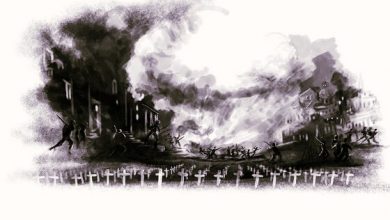Imtiaz Dharker‘s poem A Century Later is a striking exploration of themes such as resilience, violence, and the power of education. The poem takes us into a school environment where students face the harsh realities of conflict and danger. Through vivid imagery and concise storytelling, Dharker highlights the determination of young girls to pursue their education despite the challenges they face. The poem’s structure, rhyme scheme, and meter play a significant role in conveying the urgency and strength of the narrative.”
The poem represents the plight and resilience of girl students the world over who have been facing injustices and obstacles to accessibility the world over. In particular, it demonstrates the resilience of girls like Malala Yousafzai who fought for her right to education by literally taking a bullet from the guns of the Taliban. At the age of 17, she became the youngest person to win the Nobel Peace Prize – and she received the good news while in her physics class.
A Century Later | Summary & Analysis
The poem consists of four compact stanzas, each containing a snapshot of a specific moment or emotion. This structure allows for a rapid progression of events and emotions while maintaining a focused narrative. The poem does not follow a consistent rhyme scheme. Instead, it utilizes occasional rhyming pairs (e.g., “head” and “lead” or “failed” and “buzzing”), which add a touch of musicality to specific lines. The irregular rhyme scheme mirrors the unpredictable and often chaotic nature of the subject matter. The poem is primarily written in free verse, offering flexibility in structure and allowing the poet to emphasize the urgency of the story.
The use of enjambment (continuing a sentence or phrase from one line to the next without a pause) contributes to the sense of continuous motion and emotional intensity. The poem does not adhere to a strict metrical pattern. Instead, it employs natural speech rhythms and pauses to convey the emotional weight of the narrative.
The varying line lengths and rhythms create a dynamic and emotionally charged reading experience. It is a compelling and emotionally resonant poem that addresses the enduring impact of violence on young girls’ lives and their resilience in the face of adversity. The poem’s structure and form serve to enhance the narrative’s urgency and power, making it a poignant piece of contemporary poetry.
A Century Later | Analysis, Lines 1-4
The school-bell is a call to battle,
every step to class, a step into the firing-line.
Here is the target, fine skin at the temple,
cheek still rounded from being fifteen.
In these opening lines, Dharker presents the school as a place where students face adversity and danger. The school-bell, typically associated with the start of a lesson, is portrayed as a call to battle, emphasizing the challenging nature of education. Each step taken towards the classroom is likened to stepping into a firing line, suggesting that students are entering an environment filled with risks and challenges. The description of the students’ physical features, such as their fine skin and rounded cheeks, underscores their youth and vulnerability. This contrast between the innocence of youth and the harshness of their educational experience serves to highlight the poem’s central theme – the difficult journey that students must undertake in pursuit of knowledge.
The poem consists of short lines, which creates a sense of immediacy and impact. The brevity of the lines also mirrors the abruptness of the school environment. The structure allows for a concise but powerful expression of the poem’s themes. The school-bell is compared to a “call to battle,” indicating that going to school is not just an ordinary task but a challenging and potentially dangerous endeavor. This metaphor sets the tone for the rest of the poem. The lines provide vivid visual imagery by describing the students’ appearances. The “fine skin at the temple” and the “cheek still rounded from being fifteen” evoke the vulnerability and youth of the students, highlighting their innocence in contrast to the harshness of their surroundings. The repetition of the “s” sound in “step to class” and “step into the firing-line” creates a sense of rhythm and emphasizes the idea that every movement towards education is fraught with danger.
A Century Later | Analysis, Lines 5-10
Surrendered, surrounded, she
takes the bullet in the head
and walks on. The missile cuts
a pathway in her mind, to an orchard
in full bloom, a field humming under the sun,
its lap open and full of poppies.
In these lines, Dharker paints a vivid picture of a woman who faces a traumatic event, symbolized by taking a “bullet in the head” and being “surrounded.” Despite this violence and the mental impact it has, she continues to persevere and “walks on.” This resilience suggests a profound inner strength.
The missile’s cutting a pathway in her mind indicates that the trauma leaves a lasting mark, altering her mental landscape. However, this change takes her to a mental space described as an “orchard in full bloom” and a “field humming under the sun.” These images signify a contrast between external violence and internal serenity. The orchard and the blooming field represent a mental escape, a place of solace and beauty amidst chaos. The mention of the “lap open and full of poppies” further emphasizes this peaceful imagery, as poppies are often associated with tranquillity and remembrance. This juxtaposition of violence and tranquillity highlights the resilience and ability of the human mind to find refuge and solace in the most trying of circumstances.
The lines may symbolize resilience and the power of the human spirit in the face of adversity. The lines have a fluid and enigmatic structure, with short phrases and abrupt transitions, creating a sense of immediacy and emotional intensity. The juxtaposition of violence and tranquillity in the imagery contributes to the poem’s impact.
The lines employ metaphors to convey complex emotions and experiences. The bullet in the head and the missile cutting a pathway in the mind symbolize violence and trauma. In contrast, the orchard in full bloom and the field humming under the sun represent tranquillity and beauty. The line “The missile cuts a pathway in her mind” personifies the missile, giving it agency and suggesting that it has a profound impact on the individual’s thoughts and consciousness.
A Century Later | Analysis, Lines 11-16
This girl has won
the right to be ordinary,
wear bangles to a wedding, paint her fingernails,
go to school. Bullet, she says, you are stupid.
You have failed. You cannot kill a book
or the buzzing in it.
In these lines, Dharker celebrates the triumph of a girl who has emerged victorious over the challenges posed by violence and adversity. The girl is said to have “won the right to be ordinary,” signifying that she has earned the privilege of leading a normal life, something that might be taken for granted in less turbulent circumstances. The act of wearing “bangles to a wedding” and “painting her fingernails” represents the simple joys and traditions of life that she can now partake in without fear. Additionally, the mention of “go to school” underscores the importance of education and how it represents both empowerment and a pathway to a brighter future.
The girl’s direct address to the bullet, calling it “stupid” and declaring its failure, is a powerful declaration of her resilience and defiance. It symbolizes her rejection of violence and the oppressive forces that may have tried to silence her. The final line, “You cannot kill a book or the buzzing in it,” emphasize the enduring power of knowledge and the impossibility of suppressing it. Even in the face of violence, the pursuit of education and the ideas contained within books remain unassailable.
The lines are structured with short and concise statements, reflecting a straightforward and assertive tone. This structure reinforces the speaker’s message of triumph over adversity. The lines personify the bullet, addressing it directly as if it were a sentient being. This personification serves to emphasize the girl’s defiance and resilience in the face of violence. The “bullet” symbolizes violence, conflict, or oppression, while “a book” represents knowledge, learning, and intellectual pursuit. The “buzzing in it” suggests the vitality and vibrancy of knowledge.
A Century Later | Analysis, Lines 17-19
A murmur, a swarm. Behind her, one by one,
the schoolgirls are standing up
to take their places on the front line.
In these lines, Dharker paints a scene where schoolgirls are depicted as a collective force, united in their actions and determination. The “murmur” and “swarm” suggest a sense of solidarity and shared purpose among them. The phrase “one by one” implies a deliberate and organized process, highlighting the individual commitment of each schoolgirl to take her place. The reference to “the front line” carries a sense of significance and responsibility, implying that these girls are prepared to face something substantial, perhaps a challenge or an opportunity. These lines may symbolize the idea that education empowers young women to be active participants in society and to take on leadership roles. It could also suggest a broader theme of unity and collective action in the face of adversity or social change
The lines are concise and utilize vivid imagery to convey a sense of collective action and determination among the schoolgirls. The use of “a murmur” and “a swarm” evokes a sense of unity and shared purpose, while the reference to taking “their places on the front line” implies a readiness to confront something important. The use of “a murmur” and “a swarm” creates a strong visual and auditory image. It portrays a sense of collective movement and purpose among the schoolgirls. Describing the schoolgirls as taking their places on the “front line” employs metaphorical language. This metaphor suggests that the girls are positioning themselves at the forefront of a challenge or cause.
A Century Later | About the Author
Imtiaz Dharker is a contemporary British-Pakistani poet and artist known for her thought-provoking and socially conscious poetry. Her work often delves into complex themes related to identity, culture, and social justice. In “A Century Later,” she addresses the enduring impact of violence on young girls’ lives and their determination to resist its effects through education.


